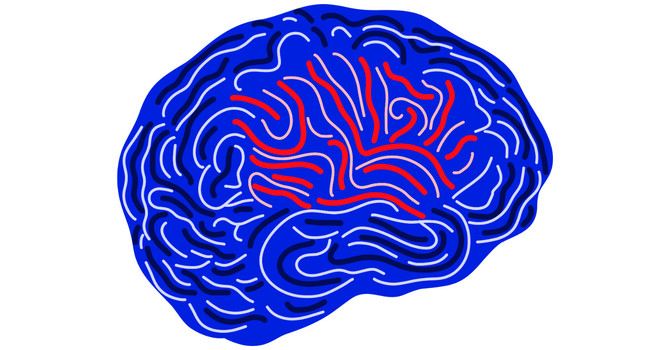Eating gluten-free can be challenging at first, especially if you're used to a diet that includes a lot of wheat-based products like bread, pasta, and baked goods. It requires a significant shift in your eating habits and may require some planning and preparation.
However, with time, many people find that eating gluten-free becomes easier and more manageable. There are now many gluten-free alternatives available for many common foods and more restaurants and food manufacturers are offering gluten-free options, making it easier to dine out and find convenient meal options. Many people find that a gluten-free diet can be just as enjoyable and varied as a traditional diet, with plenty of delicious and nutritious foods to choose from.
As a reminder: Gluten is a protein found in certain grains, including wheat, barley, and rye. Foods that contain these grains are likely to contain gluten. Here are some examples:
• Bread, rolls, and baked goods made with wheat flour
• Pasta and noodles made with wheat flour
• Cereals made with wheat, barley, or rye, including many types of oats (due to cross-contamination)
• Beer and other alcoholic beverages made with barley, wheat, or rye
• Some soups, sauces, and gravies that use wheat flour as a thickener
• Some processed meats and vegetarian meat substitutes that contain wheat gluten as a binding agent
It's important to note that gluten can also be found in foods that you might not expect, such as soy sauce, salad dressings, and even some medications and supplements. Therefore, it's important for individuals with celiac disease or gluten intolerance to carefully read labels and seek guidance from a healthcare professional.
When replacing gluten foods, we recommend being very mindful of nutrient content. Just because something is gluten free does not make it healthy. Many people with gluten sensitivity or celiacs also struggle with inflammation and may experience relief of symptoms with reduction of inflammatory foods. If you are avoiding gluten, there are plenty of foods you can still enjoy, including:
1. Fruits and vegetables: All fresh fruits and vegetables are naturally gluten-free.
2. Grains and starches: Gluten-free grains and starches include rice, quinoa, corn, potatoes, and tapioca.
3. Meat, poultry, and fish: All fresh meats, poultry, and fish are naturally gluten-free.
4. Dairy: Most dairy products are gluten-free, including milk, cheese, and yogurt.
5. Legumes: Legumes, such as lentils, chickpeas, and black beans, are gluten-free and a good source of protein.
6. Nuts and seeds: Nuts and seeds, including almonds, cashews, and chia seeds, are naturally gluten-free and a great source of healthy fats and protein.
7. Gluten-free products: There are also many gluten-free products available, including bread, pasta, and baked goods, that are made with gluten-free grains such as rice flour, corn flour, and almond flour.
If you are looking for gluten free recipes, try searching for "Paleo," "AIP," or "Whole 30" as all 3 of these eating styles do not include gluten or other foods that are inflammatory.
This is part 2 of a 3 part series on Gluten. Check back next week to learn about how gluten can affect kids. We are also having a lecture at Epiphany Gluten Free Bakery on Wednesday April 19th at 3:45 to discuss all the things you need to know about Gluten. If you have further questions or would like to schedule an appointment or telehealth consultation, please call us at 239-955-1355.
COMIENDO SIN GLUTEN: "QUE PUEDE COMER AHORA?
Comer sin gluten puede ser un desafío al principio, especialmente si está acostumbrado a una dieta que incluye muchos productos a base de trigo, como pan, pasta y productos horneados. Requiere un cambio significativo en sus hábitos alimenticios y puede requerir algo de planificación y preparación.
Sin embargo, con el tiempo, muchas personas descubren que comer sin gluten se vuelve más fácil y manejable. Ahora hay muchas alternativas sin gluten disponibles para muchos alimentos comunes y más restaurantes y fabricantes de alimentos ofrecen opciones sin gluten, lo que facilita salir a cenar y encontrar opciones de comidas convenientes. Muchas personas encuentran que una dieta sin gluten puede ser tan agradable y variada como una dieta tradicional, con muchos alimentos deliciosos y nutritivos para elegir.
Como recordatorio: el gluten es una proteína que se encuentra en ciertos granos, incluidos el trigo, la cebada y el centeno. Es probable que los alimentos que contienen estos granos contengan gluten. Aquí hay unos ejemplos:
• Pan, panecillos y productos horneados elaborados con harina de trigo
• Pasta y fideos elaborados con harina de trigo
• Cereales elaborados con trigo, cebada o centeno, incluidos muchos tipos de avena (debido a la contaminación cruzada)
• Cerveza y otras bebidas alcohólicas elaboradas con cebada, trigo o centeno
• Algunas sopas, salsas y salsas que usan harina de trigo como espesante
• Algunas carnes procesadas y sustitutos vegetarianos de la carne que contienen gluten de trigo como agente aglutinante
Es importante tener en cuenta que el gluten también se puede encontrar en alimentos inesperados, como la salsa de soya, los aderezos para ensaladas e incluso algunos medicamentos y suplementos. Por lo tanto, es importante que las personas con enfermedad celíaca o intolerancia al gluten lean detenidamente las etiquetas y busquen orientación de un profesional de la salud.
Al reemplazar los alimentos con gluten, recomendamos tener muy en cuenta el contenido de nutrientes. El hecho de que algo no contenga gluten no significa que sea saludable. Muchas personas con sensibilidad al gluten o celíacos también luchan contra la inflamación y pueden experimentar alivio de los síntomas al reducir los alimentos inflamatorios. Si está evitando el gluten, hay muchos alimentos que aún puede disfrutar, que incluyen:
1. Frutas y verduras: todas las frutas y verduras frescas no contienen gluten de forma natural.
2. Granos y almidones: Los cereales y almidones sin gluten incluyen arroz, quinua, maíz, papas y tapioca.
3. Carnes, aves y pescados: Todas las carnes, aves y pescados frescos son naturalmente libres de gluten.
4. Lácteos: la mayoría de los productos lácteos no contienen gluten, incluidos la leche, el queso y el yogur.
5. Legumbres: Las legumbres, como las lentejas, los garbanzos y los frijoles negros, no contienen gluten y son una buena fuente de proteínas.
6. Nueces y semillas: las nueces y las semillas, incluidas las almendras, los anacardos y las semillas de chía, no contienen gluten de forma natural y son una excelente fuente de proteínas y grasas saludables.
7. Productos sin gluten: también hay muchos productos sin gluten disponibles, incluidos pan, pasta y productos horneados, que están hechos con granos sin gluten, como harina de arroz, harina de maíz y harina de almendras.
Si está buscando recetas sin gluten, intente buscar "Paleo", "AIP" o "Whole 30", ya que estos 3 estilos de alimentación no incluyen gluten u otros alimentos que son inflamatorios.
Esta es la parte 2 de una serie de 3 partes sobre el gluten. Vuelva a consultar la próxima semana para conocer cómo el gluten puede afectar a los niños. También tendremos una conferencia en Epiphany Gluten Free Bakery el miércoles 19 de abril a las 3:45 para discutir todo lo que necesita saber sobre el gluten. Si tiene más preguntas o desea programar una cita o una consulta de telesalud, llámenos al 239-955-1355

Waldo Amadeo
Contact Me







